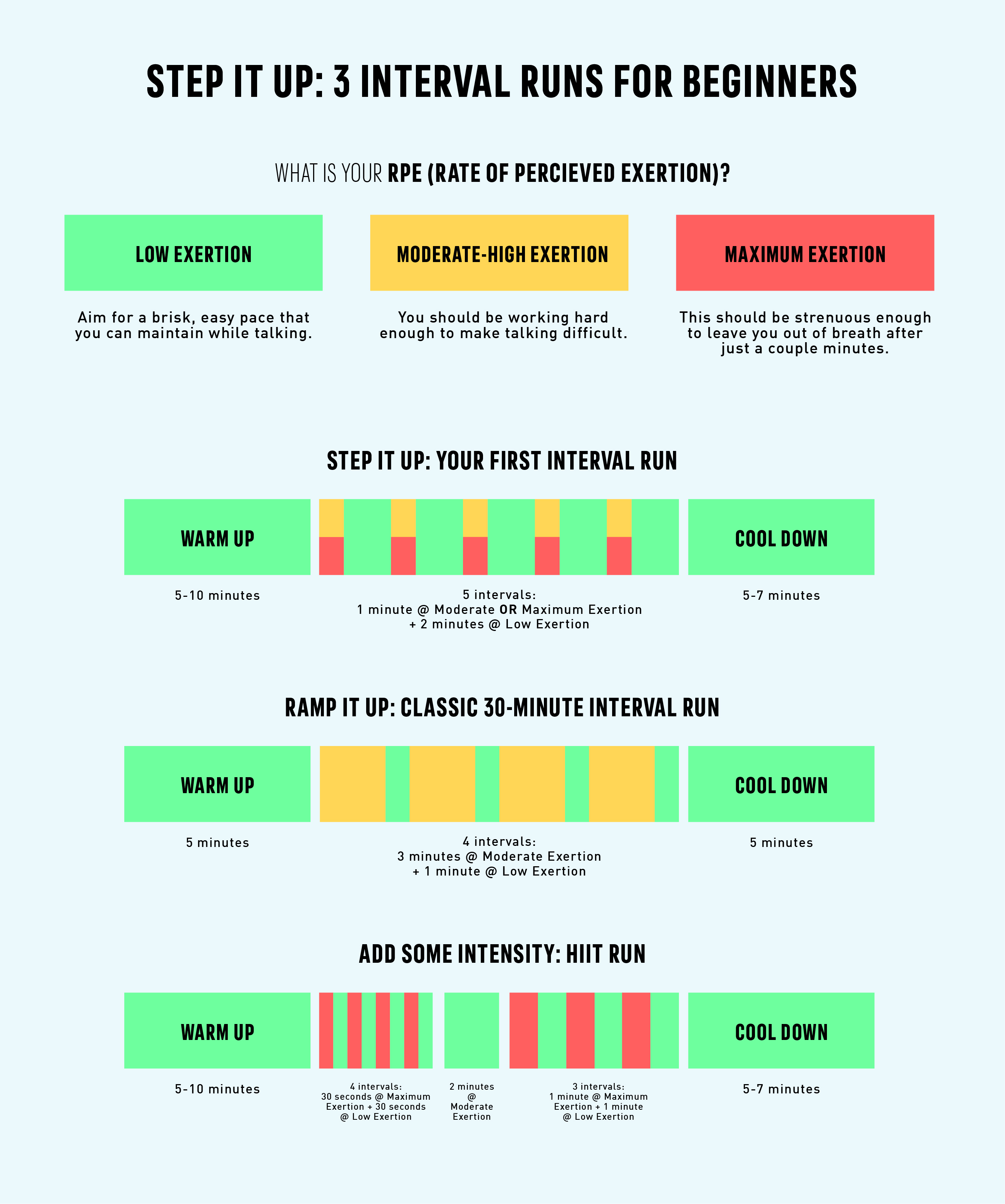What’s Interval Running? What Are the Benefits?
Want to supercharge your runs? With intervals, runners at any level can infuse a half-hour run with fresh motivation and even added fitness benefits.
“Interval running” describes deliberately changing your pace as you run, alternating brief intervals of high-intensity exercise with periods of active recovery. As coaches for Golden Coast Track Club, Terrence Mahon and Jen Rhines love to add intervals to their routines.
“Interval training is actually the best way to build fitness, as opposed to just going on easy runs every day,” says Mahon, who has coached athletes to national titles and world-class competition from 800-meters up to marathons — even coaching eight Olympians. As a coach for some of the planet’s top distance runners, Mahon has seen intervals boost fitness for runners and athletes at every level, from novice to pro. He says this is because intervals create “peaks and valleys of heart rate modulation and overall effort.” These short bursts of high intensity “trigger mechanisms in the body that help you burn fat, build muscle, and improve your cardiovascular system — what trainers might call your Vo2 max — faster than if you just went 30 minutes at a moderate heart rate.”
Jennifer "Jen" Rhines is a long-distance runner who’s made 15 US Teams and competes in track, cross country and road running events. As a three-time Olympian, Rhines loves interval runs for jump-starting fitness gains and staying motivated, “For me, intervals make running more fun. You can track your progression and watch your average pace improve, which I think is something anyone can get excited about,” she says.
Workout Plan: Three Interval Runs for Beginners

To modulate your pace while running, pay attention to your “rate of perceived exertion (RPE).” Explains Mahon, “On an easy run, you should be able to breathe through your nose and get enough oxygen. The harder you work, the more you’ll start breathing through both your nose and your mouth.”
What’s Your RPE?
RED: Maximum exertion; about 85-90% of the hardest you can work. This should be strenuous enough to leave you out of breath after a few minutes.
YELLOW: Moderate to high exertion; breathing through your nose and mouth. You should be working hard enough to make talking difficult.
GREEN: Low exertion. Aim for a brisk, easy pace that you can maintain while talking.
1. STEP IT UP: A SIMPLE INTERVAL RUN FOR FIRST TIMERS
Want to try adding intervals to your run? Start with a straightforward plan like this one.
Warmup: Jog or walk briskly at GREEN level for 5-10 minutes.
Intervals: Run at YELLOW or RED level for one minute, then jog or walk at GREEN for two minutes. Repeat this three-minute interval cycle four more times, for a total of five intervals.
Cool Down: Jog or walk at GREEN level for 5-7 minutes.
Coach Tips: “What many people do when they’re just starting with intervals is they’ll run much too fast for the first two intervals, and then the last three are much slower,” says Mahon. A good goal for beginners is to hit a pace that you can sustain for all five intervals.
2. RAMP IT UP: CLASSIC 30-MINUTE INTERVAL RUN
Warmup: Jog or walk briskly at GREEN level for 5 minutes.
Intervals: Run at YELLOW level for three minutes, then jog or walk at GREEN for one minute. Repeat this four-minute interval cycle three more times, for a total of four intervals.
Cool Down: Jog or walk at GREEN level for 5 minutes.
Coach Tips: Rhines suggests intervals like these for runners who want to shave time off of their overall pace: “Intervals are harder than running at a steady, easy pace, so the interval workouts can be tough, but then that average pace you’ve been running — all of a sudden that feels easier.”
3. ADD SOME INTENSITY: HIGH INTENSITY INTERVAL RUN
Warmup: Jog or walk briskly at GREEN level for 5-10 minutes.
Intervals: Run at RED level for 30 seconds, then jog or walk at GREEN for 30 seconds. Repeat this one-minute interval cycle three more times.
Rest: Jog or walk briskly at GREEN level for 2 minutes.
Intervals: Run at RED level for one minute, then jog or walk at GREEN for one minute. Repeat this two-minute interval cycle twice more.
Cool Down: Jog or walk at GREEN level for 5-7 minutes.
Coach Tips: “The great thing about interval training is you there’s a lot of variety to it, and you can personalize your workout based on what you’re trying to train for,” says Mahon. He says that HIIT runs can be especially helpful for athletes who want to build overall strength.
“The faster you run for those short bursts, the more muscle strength you’ll build. Someone who’s into strength training, for example, can really benefit from high-intensity intervals as part of their cardio routine.”
Fitter, Faster, and More Fun: Intervals Can Improve Motivation

Both Rhines and Mahon stress the importance of recovery for anyone who’s integrating interval training into their fitness routine. To allow yourself time to recover, Mahon suggests doing intervals two or three times a week, alternating with easier runs at a steady pace. The added benefit of this approach is that it infuses more variety into your fitness routine. “Intervals add variety and that’s the spice of life,” says Mahon.
Based on her own experience, Rhines agrees, “When you add intervals it keeps it interesting because it gives you something to focus on. Obviously it adds more challenge, but it keeps things fresh and helps me get fitter, faster.”
